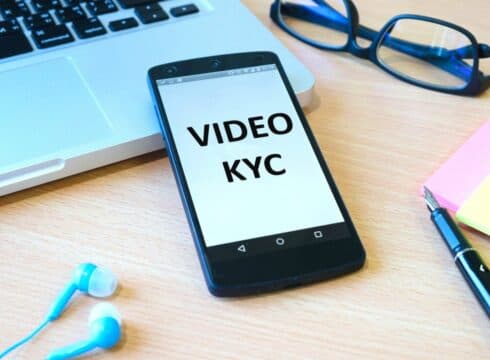In January 2020, the RBI announced the use of video-based customer identification process (V-CIP)
RBI has also encouraged these institutions to deploy advanced digital solutions
By simplifying the onboarding process, financial institutions will be able to deliver an enhanced customer experience
Inc42 Daily Brief
Stay Ahead With Daily News & Analysis on India’s Tech & Startup Economy
In January 2020, the Reserve Bank of India announced a major amendment in the know-your-customer (KYC) norms for banks and other lending institutions under its purview to permit the use of video-based customer identification process (V-CIP).
The move will help financial institutions onboard their prospective customers easily, without heavy KYC documentation, as they can use a consent-based alternate method for establishing their identity.
Along with this amendment, the RBI has also encouraged these institutions to deploy advanced digital solutions, including artificial intelligence (AI) and face matching technologies, to ensure the accuracy and integrity of the process.
In the above background, the Indian financial institutions will increasingly look for deploying technologies which help them deploy a video-based KYC solution that cuts down their own effort and resources to engage with the customer, collecting physical documents and setting up a meeting at the branch or their home, and coordinate with other government entities to verify the documents.
Instead, they can merely capture a customer interaction over a video call, take scanned copies of identification documents, and digitally verify these. Moreover, by simplifying the onboarding process, financial institutions will be able to deliver an enhanced customer experience.
By partnering with a Communications Platform as a Service (CPaaS), banks and other financial institutions can easily embed video capabilities into their existing digital platforms (website/mobile applications etc.) to offer a video-based e-KYC option to their potential customers.
This, in turn, helps these customers to fulfil their KYC requirements online without leaving the comfort of their home or office. There are several ways to conduct this KYC process.
Self-service KYC
This process is almost similar to filling up a video-based questionnaire. Here a pre-recorded process brings up the requirement on the customer’s screen. They can address these requirements in real-time. Once they have submitted the basic details such as the identity and address proofs, there could be some other follow up questions depending upon the submission.
Customer’s responses to these questions are recorded. In the end, the customer can choose to go through these responses and submit the information to the bank. The process takes about 10-15 minutes. Post this, the backend team at the bank verifies this information before onboarding the customer.
Interactive KYC
In this case, a potential customer can connect with the bank representative over a video call. This call could be initiated over the bank’s digital platforms. The representative can interview the customer, verify the information provided by him and authenticate the customer in real-time. The process is not only faster but also much more convenient for both parties.
This capability offered by a cloud-based CPaaS platform, which comes with software development kits (SDKs) and application programming interfaces (APIs) makes banks and other financial institutions fulfil the KYC requirements in a cost-efficient and effective manner. At the same time, the potential customers start their journey with an enriched experience, while complying with the regulatory requirements.
{{#name}}{{name}}{{/name}}{{^name}}-{{/name}}
{{#description}}{{description}}...{{/description}}{{^description}}-{{/description}}
Note: We at Inc42 take our ethics very seriously. More information about it can be found here.


